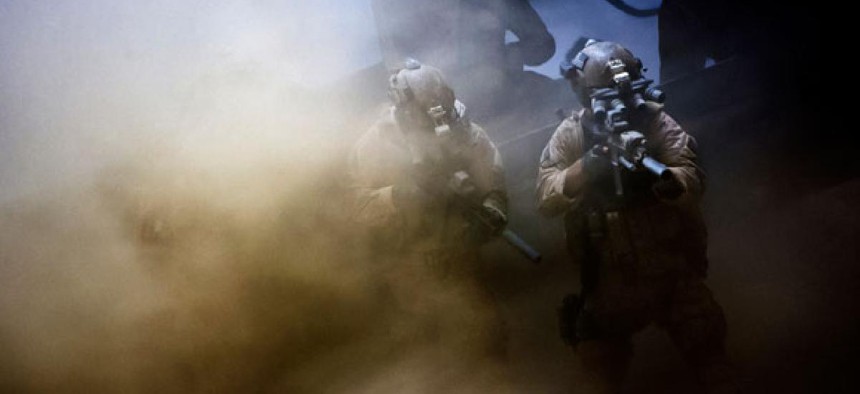
A still from the film shows SEALs during the mission. Columbia Pictures/AP
Don't trust 'Zero Dark Thirty'
The acclaimed thriller represents a troubling new frontier of government embedded filmmaking
One of the most dramatic scenes in Zero Dark Thirty, the new film by Kathryn Bigelow and Mark Boal, takes place in a conference room where the CIA team hunting Osama bin Laden is lambasted by its boss, played by Mark Strong. "There's no working group coming to the rescue," he says. "There's nobody else, hidden away on some other floor. There is just us. And we are failing." Voice filling with rage, he recounts the death toll from 9/11 and other al Qaeda attacks, shouting at his team, "I want targets! Do your fucking jobs, bring me people to kill!"
Much of the pre-release debate about the movie has focused on whether it portrays torture as effective, in the sense of prying information out of al Qaeda suspects. Yes, the movie conveys that view, and I think it's inaccurate. Many experts, including key senators who oversaw an extensive congressional investigation, have concluded that torture did not play a significant role in finding bin Laden, and that torture in general is a counter-productive way to get information from prisoners. But the heated debate on torture misses what's far more important and troubling about a film that seems destined for blockbuster and Academy Award status. Zero Dark Thirty represents a new genre of embedded filmmaking that is the problematic offspring of the worrisome endeavor known as embedded journalism.
Unlike Lincoln, about a man who was killed a century and a half ago, Zero Dark Thirty portrays recent events. We know pretty much everything there is to know about Lincoln—all that's left is to interpret the historical record—but precious little about the hunt for bin Laden. That's why I was not only riveted by the "Bring me people to kill" line, but curious. Did it really happen? Did the film's heroine, who is called Maya, really tell the CIA director, during a meeting about bin Laden's compound, "I am the motherfucker that found that place"?






